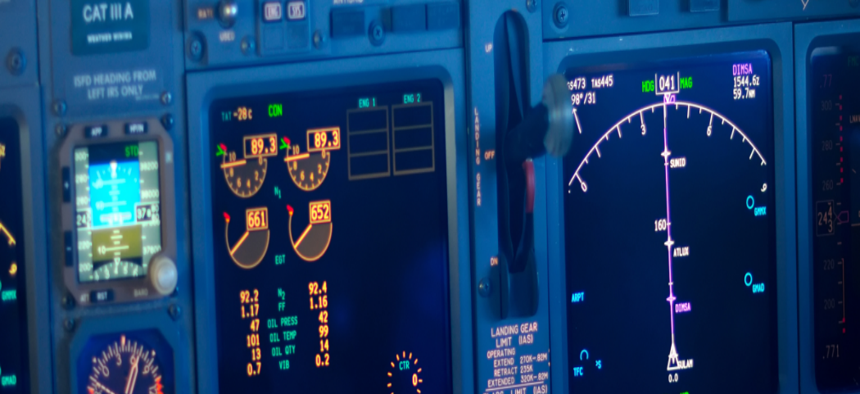
Joint DOD office enlists in avionics effort
The Joint Tactical Networking Center will collaborate with an industry consortium forging avionics software standards.
The decades-old effort to develop common avionics that could be used across the military services got a boost with an agreement between a joint DOD agency and a government-industry consortium that is working to define open avionics standards for military aircraft.
The memorandum of understanding announced this week includes development efforts that support alignment of the consortium's technical standard for open avionics with the Joint Tactical Networking Center's (JTNC) software communications architecture. The San Diego-based center develops secure, interoperable waveforms and wireless communication systems for joint DOD programs and coalition forces.
The organization behind the avionics effort is the Open Group Future Airborne Capability Environment Consortium, or FACE. Members of the consortium include major defense electronics suppliers along with the Air Force Research Laboratory as well as the Army and Navy's aviation branches.
The partners said the agreement includes avionics standards harmonization efforts, such as collaborating to support service missions and exchanging information on development work. The collaboration would help military avionics suppliers "achieve greater efficiencies where the standards are aligned, with many systems-of-interest requiring conformance to both [JTNC's software communication architecture] and FACE standards," noted Judy Cerenzia, consortium director.
The agreement essentially formalizes collaboration between the joint DOD agency and the industry consortium with the goal of aligning existing avionics standards and creating new specs where needed, Cerenzia added.
Along with forging open avionics standards that can be used to develop common systems, the FACE Consortium promotes the use of standard interfaces that will boost system reuse as well development specs for architecture and software development.
Program managers overseeing military aviation programs acknowledge that future avionics capabilities will evolve from systems controlled by software. Open standards efforts such as FACE are designed to avoid reinventing the wheel as new capabilities come online by promoting software reuse and portability.
That, proponents argue, represents a key step toward achieving long-sought common avionics suites that can be programmed for specific service missions. The open standards effort "is quite possibly the most important innovation in naval aviation since computers were first incorporated into airplanes," said retired Capt. Tracy Barkhimer, who previously served as head the Navy's Air Combat Electronics Program Office.
Naval Air Systems Command formally adopted the FACE conformance program earlier this year that among other things certifies that avionics software complies with open systems technical standards.
The four-step conformance program includes a preparation stage during which "unit of conformance" package such as an operating system is readied for certification. After the package is verified, a certification group issues a conformance stamp of approval.
The last step involves placing the certified software in a FACE registry, allowing a software developer to declare that the system meets the group's technical standard for avionics systems.

